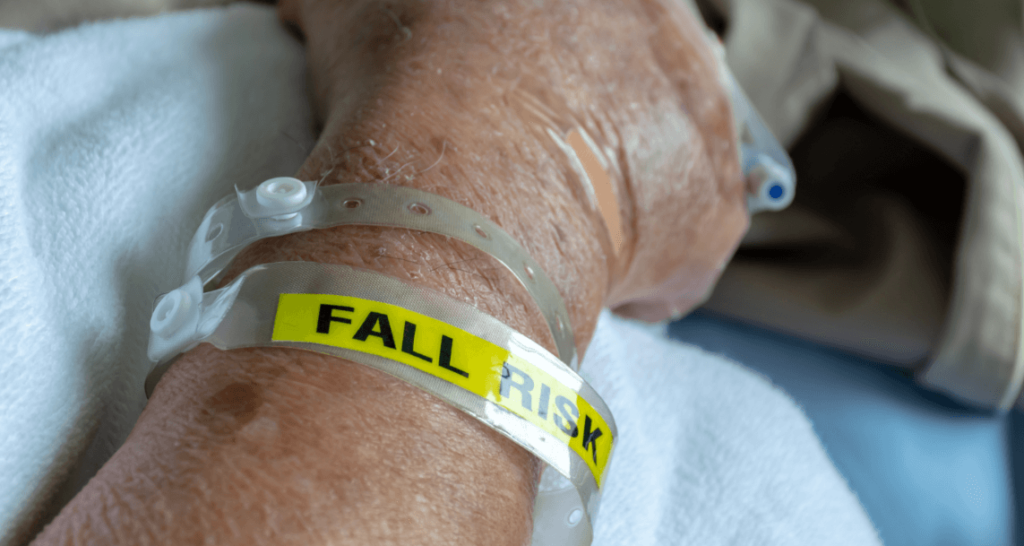A potential client appears in your office with a familiar story…
An aging, but relatively healthy mother lived with her daughter when she had to be admitted into the hospital for an illness. Her daughter remained by her side 24/7.
Her mother was due to be released soon and the nurses encouraged the daughter to go home, take a shower, get some clean clothes and groceries, then come back to pick up her mother in a few hours.
Though fall risk protocols were in place, the nurses failed to respond to the mother’s repeated attempts for assistance to use the restroom. So, in desperation, the mother gets up to go to the bathroom, falls and strikes her head. She then develops a brain bleed and dies.
This sort of thing should never occur, but don’t take my word for it. The Centers for Medicare & Medicaid Services (CMS) considers falls to be “never events,” meaning they are completely preventable.
Chief medical officer and vice president, Erin DuPree, M.D. of Joint Commission Center for Transforming Healthcare has admitted that, “With a death rate of 11,000 annually from patient falls, we ‘fell’ as a health system.”
The No. 1 cause of patient injuries in hospitals today is falling. Every year, somewhere between 700,000 and 1 million people in the United States experience a fall in a hospital (Agency for Healthcare Research and Quality). Between 30 and 51 percent of falls result in an injury. These falls often cause serious injuries, sometimes leaving patients with traumatic brain injuries that can lead to death.
It is a basic tenet of the law that hospitals have a duty to protect their patients from foreseeable risk of harm. The applicable standard of care for hospitals can be found in many peer review publications. In addition, most hospitals have their own policies and procedures, which can serve as valuable evidence in a hospital fall case to establish the standard of care and violations.
We know that these “never events” can be reduced because new recommendations from the Joint Commission showed that the rate of falls was reduced by 35 percent and the rate of injuries from a fall by 62 percent for hospitals who adhered to recommended safety protocols.
The standard of care requires hospitals to properly assess patients to determine their fall risk. Based upon the individual needs of each patient, the hospital is required to implement and enforce fall risk precautions, which must be updated if the patient’s condition changes. Hospital personnel must manage a patient’s underlying fall risk factors (problems with walking, immobility, medication side effects, confusion and assistance with toileting needs) and have a written treatment plan for how they intend to protect the patient from a fall.
The most common reasons for hospital falls include:
- Negligent nurses.
- Nurse shortages.
- Improperly trained staff.
- Lack of communication among nursing staff.
- Overall lack of a hospital safety culture.
- Failure to follow lifting and transfer techniques.
- Failure to utilize lifting assistance and lifting devices.
- Not utilizing bed rails.
- Not utilizing wheelchair alarms or ignoring alarms.
- Not getting to patients to assist them to the restroom or not responding in a timely manner.
Contributory negligence is frequently a defense raised in these cases. Similar to falls in a premises liability context, the defense will focus on the plaintiff ’s responsibility. These cases are different in that the patients are usually in a vulnerable state and aren’t always able to protect themselves from harm.
Hospitals have a duty to protect patients and failure to do so can be considered medical negligence. In the hospital setting, patients who fall are there because they are not able to take care of themselves and it is the hospital’s responsibility to protect them. Patient well being should be the top priority in every medical facility and there is absolutely no excuse or good enough reason why each facility should not have a strategy in place today to reduce falls.
There is plenty of statistical evidence to prove that hospitals who follow accepted fall risk prevention protocols can prevent most falls. What the hospital should have done varies from case to case. Therefore, like other medical malpractice cases, hospital fall cases require careful analysis of the patient’s medical chart, review of hospital policies and procedures and the testimony of qualified medical experts. Kay Van Wey










